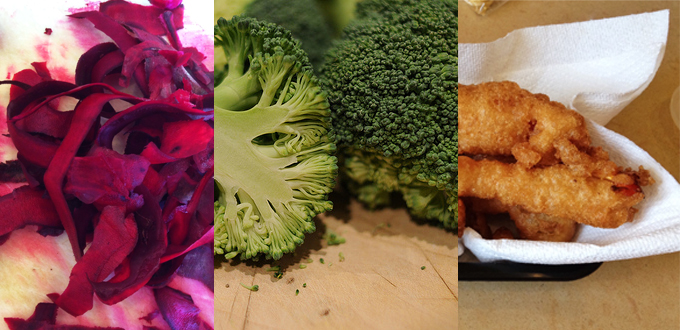savor
Mindful Eating, Mindful Life
savorthebook.com
Read More About
Mindful Eating
Mindful Living
Weight Loss
Exercise
Meditation
Recipes for a Portable Mindful Meal by Susan Guillory

As I had the privilege of practicing mindful eating with Thay’s monks and nuns during his recent visit to Boston, I thought I would share with you the recipes of my lunch. This menu is planned around portability and incorporating a variety of flavors and textures that lend well to mindful eating—whether you practice at a retreat or in a park on your lunch break.
We were instructed to eat in silence and to ponder the sources of the food; the earth, the sun, and the people who grew, delivered, and prepared it. We had a chance to relish each morsel, instead of letting our minds wander to our future tasks and plans. As the monk leading the meditative meal cleverly said, “Make sure you are eating your food, not your projects.”
As I slowly placed a spoonful of salad into my mouth, I squeezed out the succulent juices of the ingredients. One-by-one, I noticed the earthiness of the beets, the sharpness of the apple, and the tang of the chives.
Focusing on the chance to really chew reminded me of how important it is in the digestion process to cut up the food and coat it with saliva, which contains the enzymes to breakdown starches.
The sangha energy is a great way to create community by mindfully eating with others. By sharing that special time together with your family you have the opportunity to model mindful eating for your children.
It is possible to make both of these portable dishes a day in advance. The salad flavors meld, but the dumplings will be softer than when first removed from the oil. Children will also love both recipes for a meal at home, since the beet salad can be a bit messy on the road.
Apple and Beet Grated Salad
Makes 4 Servings
3 beets
1 large apple of your choice
1 T. lemon juice
2 T. olive oil
chives (optional)
salt to taste
- To protect fingers and hands from staining, wash and dry hands, then pour a few drops of olive oil into your palm and coat your hands by rubbing them together.
- Peel and grate the beets, taking extra care if using a knife to peel as your hands may be slick. (Side tip: pull the leafy greens from the stalks and sauté in a little olive oil. Greens from the tips of root veggies add nutritional tidbits to your diet)
- Mix well with the lemon juice, olive oil and salt
- Quarter the apple, and leaving the skin on, grate and add directly to the beet mixture (the lemon juice will prevent browning).
- Add some chopped chives if desired.
Veggie Tempura Dumplings
Batter makes 6 broccoli floret pieces, ½ small onion and ¼ red pepper
1 quart of high-heat oil (rice bran, canola, safflower)
A colorful variety of vegetables: red peppers, broccoli, onion
1.5 cups of gluten free flour mix or pastry flour
1 cup of chilled sparkling or flat water (sparkling water makes the batter lighter and replaces beer in this recipe)
1 tsp. of salt
1/2 tsp. of baking powder (optional, adds more density)
- As a safety precaution I never allow any children under the age of 5 in the kitchen when I am deep frying.
- Prepare the batter, combining the flour, salt, and baking powder. Add sparkling water and stir gently, as to not release the gluten if using wheat-based flour. The batter should be thick in consistency.
- Heat oil for about 10 minutes, making sure not to let it smoke (if using a wok, use a wok ring under it).
- Cut broccoli into florets (or "little trees" to appeal to children), onions should be sliced in rounds then separate the rings, peppers cut lengthwise about 1 inch thick. Traditionally vegetables are kept in fridge until just before prep time. Cold items placed in hot oil create a crispier edge.
- Mix the chopped vegetables into batter, one type at a time.
- Add one batter coated vegetable to the oil (the oil is ready if the vegetable rises to the top), followed by a few more.
- As tempura browns, turn over using tongs or chopsticks.
- Line a metal baking pan with paper towels
- After about 7 minutes or when the tempura in the wok has browned and the cooking bubbles have almost diminished, remove and lay on the paper towels. Allow to cool.
- Between batches, turn the temperature down and allow the oil to cool before adding the next batch of vegetables. Smoking or burnt oil releases free radicals which can be carcinogenic.
- Turn up heat again when vegetables have been placed in oil. Remove any floating batter pieces with a slotted spoon and discard.
- Tip: Oil can be saved and re-used if it has never reached smoking point. Let cool to room temperature, place a piece of cheese cloth over an appropriate sized glass jar, hold with a rubber band. Carefully pour in the oil but not any leftover bits of batter or flour. Can be kept in fridge for up to one week to use in stir fry’s, etc. It adds a unique depth of flavor.
SAVOR: Mindful Eating, Mindful Life. Copyright © 2025 by Thich Nhat Hanh and Lilian Cheung. All Rights Reserved. Please review our terms of use
Website design
Mary Pomerantz Advertising




